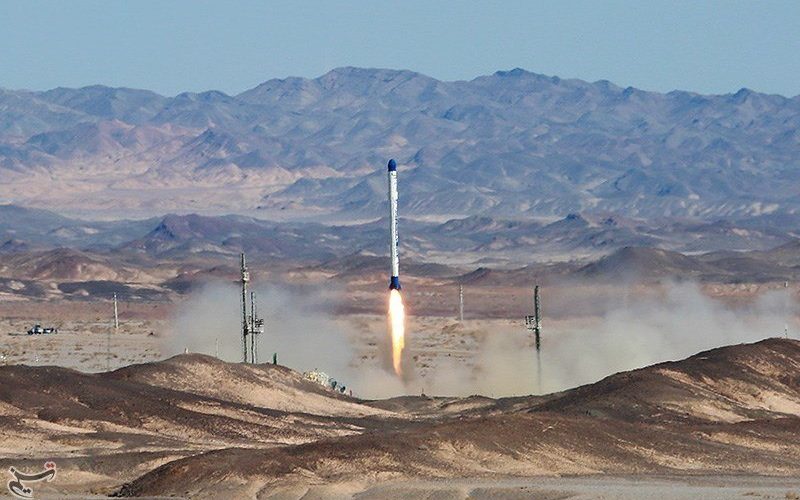“To date, Iran has not been able to put a human being into orbit; although, in 2013 they did reportedly send a monkey into a short orbit.”
Yesterday, the Islamic Republic of Iran claimed that they had successfully used a two-stage rocket to launch a satellite into orbit. The rocket launch was initially reported on a website linked to Iran’s state-run television network. The claims came as the government announced the official opening of the Imam Khomeini National Space Center.
Some experts hypothesized that the launch was not just planned as an event coinciding with the Space Center’s grand opening, but also as a show of force just days after a U.S. Naval ship fired warning shots at an Iranian patrol boat.
The Islamic Republic claimed that the Safir-2 rocket was capable of carrying a 550 pound payload into an orbit 310 miles high. A successful rocket launch could signal to the international community that Iran is developing long-range missile capabilities that could threaten Iran’s enemies, such as Israel. This is especially alarming with Iran’s reported persistence in gaining nuclear weapon capabilities.
While the United States did confirm that Iran had launched a missile at 5:30 A.M. Eastern Standard Time (2:00 P.M. local Iranian time), the United States Strategic Command (USSTRATCOM) stated that the rocket did not successfully deliver a payload into orbit.
According to STRATCOM’s Chief of Public Affairs, CAPT Brook DeWalt, the Joint Space Operations Center (JSpOC) had not detected “any additional objects in space.” The JSpOC maintains the Space Surveillance Network, which operates a worldwide network of 30 space surveillance sensors that maintain a catalog of all artificial objects that are orbiting the Earth.
Despite all evidence to the contrary, the Islamic Republic still insists that the launch was a total success and that the satellite was delivered into orbit. Iran has yet to successfully put a satellite into orbit with the multistage Safir-2 rocket, so this launch would have been groundbreaking if it had succeeded.
In recent years, the Iranian Space Agency has had its funding slashed dramatically. In 2008, their budget was reported to be $3.9 billion USD; in 2017 it was reportedly only $4.6 million USD. Despite these cuts, it has been previously reported that the Iranian government wanted to put a man on the moon by 2025. Currently, the United States is the only nation to have done so.
To date, Iran has not been able to put a human being into orbit; although, in 2013 they did reportedly send a monkey into a short orbit.
The United States and several other nations stated that the launch may have violated Iran’s 2015 nuclear agreement. The U.S. State Department referred to the launch as a “provocative action” and the president of the United Nations Security Council, Liu Jieyi, stated that the missile test was not within the scope of the agreement.
A spokesperson for the U.S. State Department stated that the United States viewed the launch as “continued ballistic missile development” that is prohibited in U.N. Security Council Resolution 2231.
It remains to be seen what actions the U.S. or the U.N. will take, with sanctions already being reportedly discussed by the Trump administration, even before the news of the launch.

















